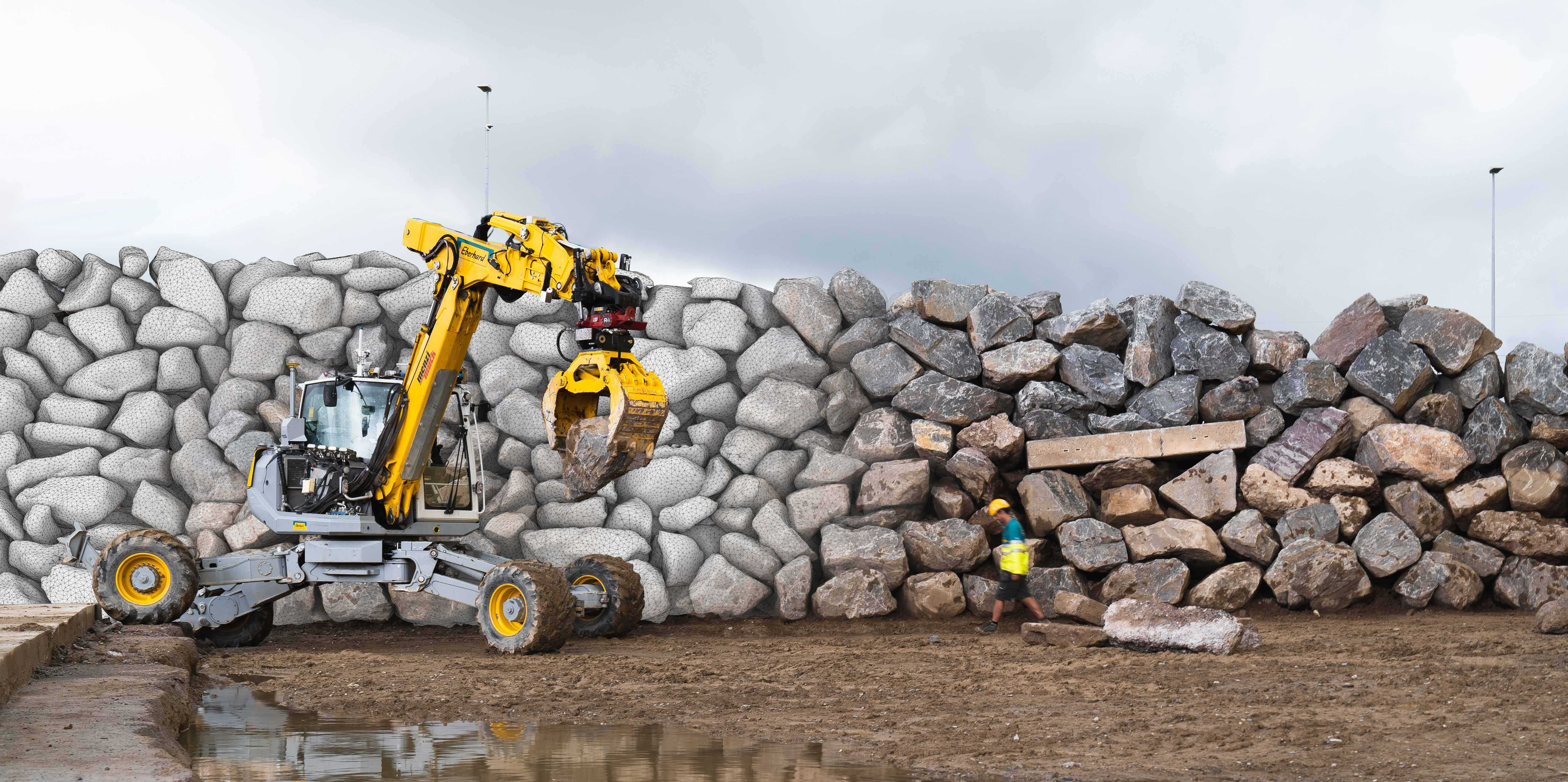An autonomous excavator built a six metre-high and sixty-five-metre-long dry-stone wall. It picks up boulders, scans them, algorithmically determines the optimal placement for them, and places them.
The wall is part of "a digitally planned and autonomously excavated landscape and park."
"Using sensors, the excavator can autonomously draw a 3D map of the construction site and localise existing building blocks and stones for the wall's construction. Specifically designed tools and machine vision approaches enable the excavator to scan and grab large stones in its immediate environment. It can also register their approximate weight as well as their centre of gravity. An algorithm determines the best position for each stone, and the excavator then conducts the task itself by placing the stones in the desired location."
"Our geometric planning algorithm uses a combination of constrained registration and signed-distance-field classification to determine how these should be positioned toward the formation of stable and explicitly shaped structures."
The paper is paywalled but I can tell you, because I was trying to figure out how a code CAD system called SummonScript works, that a signed distance field is a grid of voxels where the contents of each cell is a distance that represents the closest distance to the surface of an object. By convention, positive numbers represent 'outside' the object, while negative numbers represent 'inside' the object.
As for "constrained registration", I don't know why they call it 'registration', but the basic idea is that you put in two geometric objects, and the algorithm figures out what geometric transformations (translations, rotations, and scaling) turns the first object into something as close as possible to the second object. It's called 'constrained' because you can tack on additional constraints that you want the algorithm to satisfy. These could be angles that the algorithm is not allowed to change or points that must remain aligned with other points. Since the research paper is paywalled I can't give any more specifics of the algorithm here. Obviously one of the constraints is that it can't do scaling since the size of the stones can't change.
Autonomous excavator constructs a six-metre-high dry-stone wall | ETH Zurich
